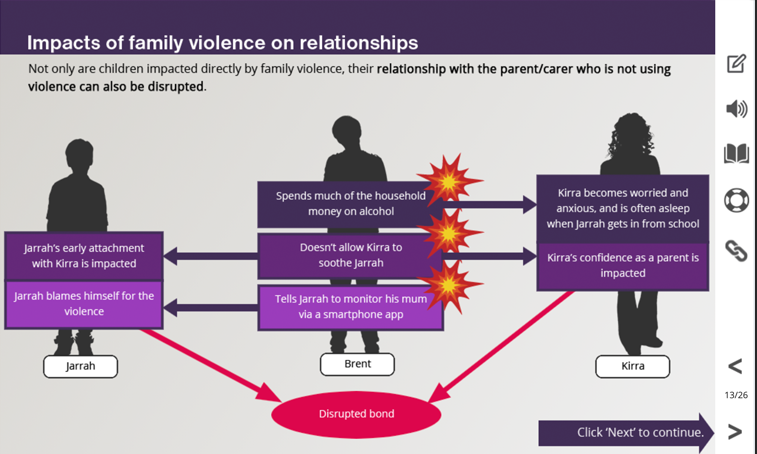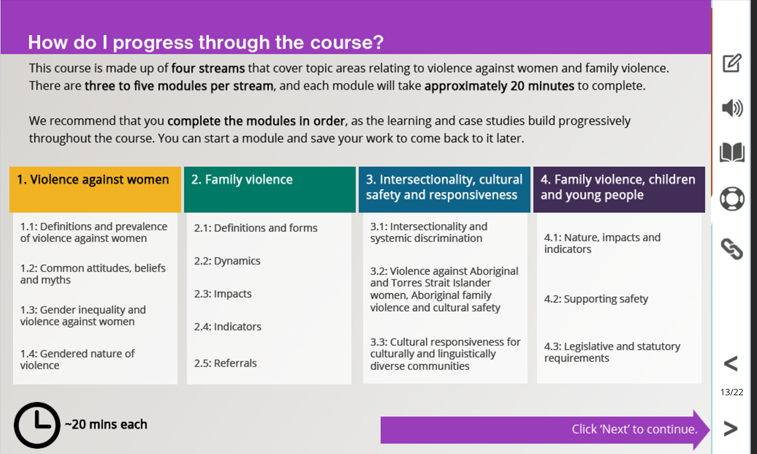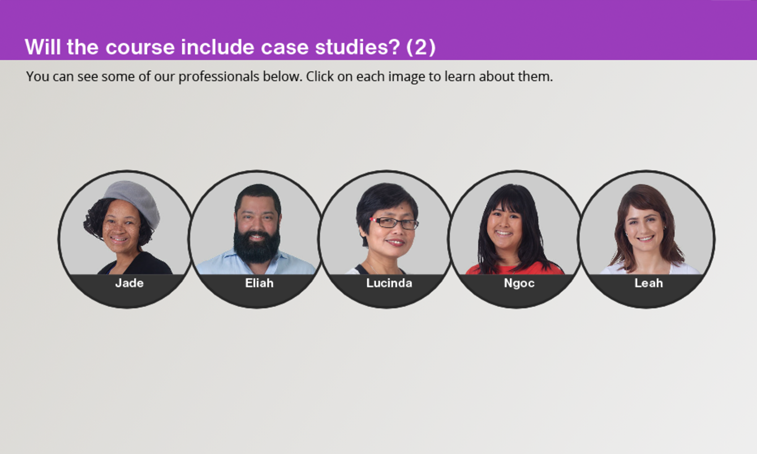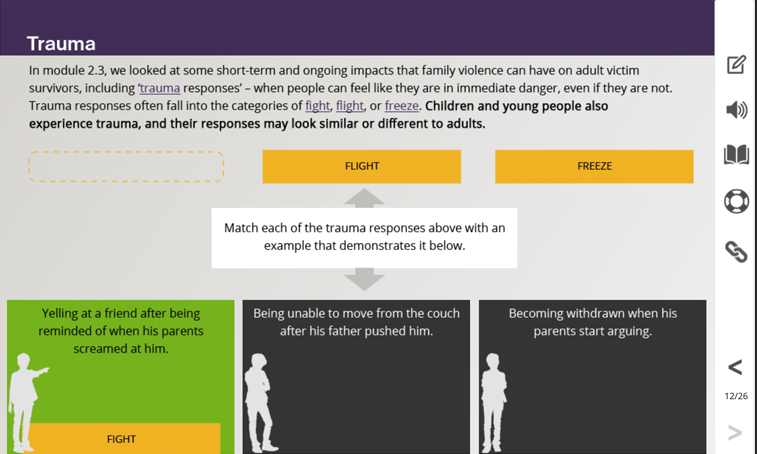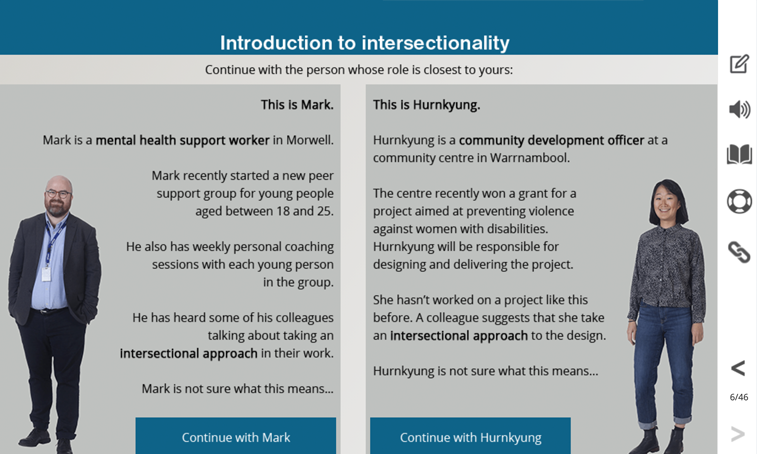Sample of work: Preventing and responding to family violence and violence against women
It’s a topic few like to talk about. From the throw-away sexist remark in the school grounds and sexual harassment on the streets to social media stalking and violence against women in the home; family violence and violence against women impacts all our lives.
The first Royal Commission into Family Violence held in Victoria in 2015 has changed the way we respond to and prevent family violence. It is now acknowledged that everyone in the community has a role to play.
Domestic Violence Resource Centre Victoria (DVRCV)
“Everyone can end family violence, as long as they’re given the right tools to do so” - Domestic Violence Resource Centre Victoria (DVRCV)
Domestic Violence Resource Centre Victoria* is a statewide resource centre supporting workers and families to help stop family violence. Their goal: “To create a world in which gender equality ensures women and their children are thriving, respected and free from violence.”
DVRCV wanted to develop an online training course that would help professionals whose work places them in contact with people experiencing violence (such as doctors, health workers, community and human services, teachers, those in welfare, housing, justice) build their foundational knowledge about preventing family violence and violence against women, and responding to family violence.
Foundational Knowledge in Preventing Family Violence and Violence Against Women, and Responding to Family Violence
The resulting elearning course, Foundational Knowledge in Preventing Family Violence and Violence Against Women, and Responding to Family Violence, consists of 16 modules and covers four streams:
-
Violence against women - covers the definitions, prevalence, attitudes, beliefs and myths and gender inequality of violence against women, as well as the gendered nature of violence.
-
Family violence - covers the definitions, forms, dynamics, impacts and indicators of family violence, plus a dedicated module on referrals.
-
Intersectionality, cultural safety and responsiveness - covers intersectionality and systemic discrimination, violence against Aboriginal women, Aboriginal family violence, cultural safety, and cultural responsiveness for culturally and linguistically diverse communities.
-
Family violence, children and young people - covers the nature, impacts, indicators, support and safety of family violence on children and young people, plus legislative and statutory requirements.
Real-life scenarios that demonstrate key knowledge concepts
The course content covers both prevention (addressing the underlying causes of violence) and response (addressing the impacts of violence after it occurs and aims to stop further violence from happening).
Through a range of case studies, a diverse group of professionals and victim/survivors guide the learner through real-life scenarios that demonstrate key knowledge concepts. As well as matching, reflection, and other interactive activities, each module has a multiple-choice quiz to test learner recall.
Broad range of learners
As the target audience for the course is quite broad (across a range of fields, different cultures, and often very different roles in prevention and response), one of the challenges was making the case studies and learning relatable and real-world relevant to such a diverse group. Voiceovers narrated by real-life professionals from the field were used to reflect the diversity of the user group.
For modules where the course content was context-specific, we designed a Choose-Your-Own-Profession approach that allows learners to choose the characters that best matched the real-world context of their work (prevention or response). In one example, we have Mark, the Mental Health Support Worker, and Hurnkyung, the Community Development Officer, guiding learners through context-specific scenarios. Activities throughout the modules further encourage learners to draw from or apply to their own work contexts.
Representation of diversity
With so many people experiencing family violence, a further challenge in the project was making sure this diversity of experience was represented – without focusing on any one group or singling them out. As such, a diverse group of scenario characters expand and develop the stories of professionals and victim/survivors across the 16 modules.
In so doing, the course gives an applied knowledge base across professions. Doctors / GPs learn how to have sensitive conversations with patients and let them know options for assistance. Teachers can let students know that what’s happening at home is not okay and there are people who can help. Community workers can assist their clients more fully when they know there is help available.
Staying agile a rapidly changing field
In most elearning design, the content you start with at the beginning of the project closely resembles the end product. Form may change but facts and figures tend to stay the same.
In response to the 2015 Royal Commission into Family Violence, the family violence sector has become a rapidly changing field: New recommendations, new frameworks, new mandatory reporting requirements. Every week there are new resources and new training requirements.
Keeping the content up-to-date with so many changes was a unique challenge for this project. Adopting a flexible, iterative design process enabled us to be adaptive with the ongoing changes. Modules can be updated with minimal cost as the inevitable sector changes continue to roll in.
Elearning with real-world impact
Creating an elearning course for a diverse and rapidly-changing field presented unique challenges but working collaboratively with the client ensured an engaging and effective learning experience.
The real-world application of this course meant that it was not just about building foundational knowledge, but making the world a safer, freer place for all.
*DVRCV has joined with DV Vic and is now Safe and Equal
Work with us
Elearn Australia is an elearning design and development company that has been servicing the online and mobile training needs of Australian businesses and organisations since 2004.
We develop cost-effective elearning strategies, content and mobile learning tools and integrate these into your choice of learning management system.
Contact us today to start designing and developing a similar course for your workforce.

